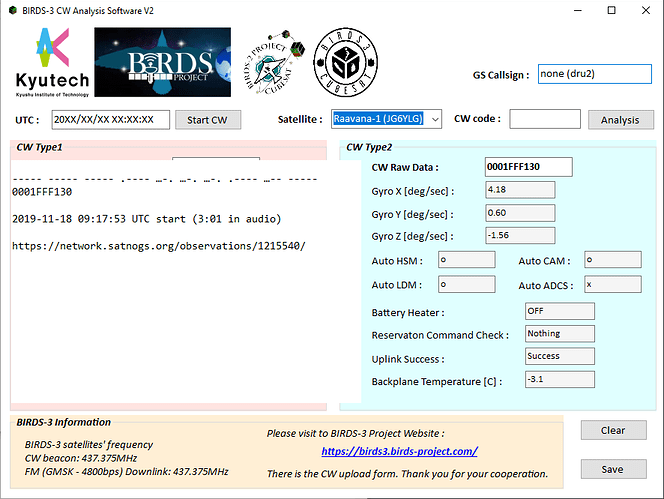Regarding Observation 1215540 …
I know my setup is weak with the RTL v3 and V dipole it comes with but I really want some data; I’d like telemetry like voltage or temp, if anyone can suggest a satellite.
I tried downloading cleaning the file and running multimon-ng but it was jibberish. Notably I took a known good audio file from another strong observation: (SatNOGS Network - Observation 1204196) with decoded data and multimon-ng did not work on that. It is jibberish.
Looking and listening at the file it was easy to see the . - on the file itself of the good observation and I am a musician so I was able to process and slow my observation down and listen and manually take morse (first time.)
I used audacity and did a equalizer, basically a hard low pass at 400 Hz, then normalized to -1db. Slowing it way down I was able to get:
----- ----- ----- .---- …-. …-. …-. .---- …-- -----
0001FFF130
Is there a way I can uploaded this data to my observation?
2019-11-18 09:17:53 UTC would be the start (3:01 in audio).
The carrier frequency makes it much harder for me to determine than if the frequency was fixed; why is this done? What significance can be given to the clock or frequency cycles of the carrier?
I would prefer to use the client pi tools, like multimon-ng on the files directly, but I see uploaded files are deleted. Does anyone know how to delay or turn off the cleanup?
Link or docs to usage guide on using multimon-ng, or point to source files so I can see the default processing config for Raavana-1 profile?
Thank you!
PS I submitted the data to the operator themselves on their website. From their manual I see I got the full 5 bytes of the housekeeping data! When I get to a windows computer again I will use their software to decode it and report back here.
Decoding software from their website: CW analysis software
